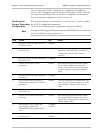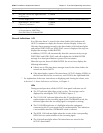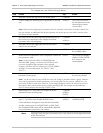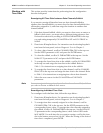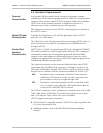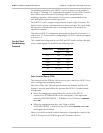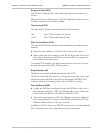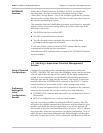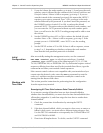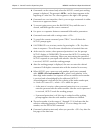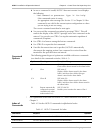
Chapter 4 - Control from the Supervisory Port HCD-E1
Installation & Operation Manual
4-2 Hardware Requirements 11/01/00 19:23
4.2 Hardware Requirements
Terminal
Characteristics
Any standard ASCII terminal (“dumb” terminal or personal computer
emulating an ASCII terminal) equipped with a V.24/RS-232 communication
interface can be used to control HCD-E1 operation. Make sure to initialize
HCD-E1 for correct terminal operation as explained in Section 4-3,
otherwise some of the commands may not work properly.
The software necessary to run the HCD-E1 control program is contained in
the HCD-E1 system.
Telnet (IP) Host
Characteristics
Typically, the Telnet host is a PC with the appropriate suite of TCP/IP
protocols, or a UNIX station.
The Telnet host can be directly connected to the managed HCD-E1 unit, or
located at any site from which IP communication be established to the
managed HCD-E1.
Control Port
Interface
Characteristics
HCD-E1 has a V.24/RS-232 asynchronous DCE port, designated CONTROL
DCE and terminated in a 9-pin D-type female connector. The control port
continuously monitors the incoming data stream and will immediately
respond to any input string received through this port; moreover, when
configured to support SLIP, messages in each of the supported protocols are
automatically identified and processed.
The supervision terminal can be connected either directly to the HCD-E1
control port (the CONTROL DCE connector), or through a modem or any
other type of full-duplex data link. The HCD-E1 control port interface type
must be set in accordance with the connection method (see Section 3-6):
DCE
Intended for direct connection to terminals. Since terminals
usually have DTE interfaces, in this case the connection to the
port is made by means of a straight-through cable.
DTE
Intended for connection through a modem or data link. In this
case, you need a cross cable (also called null modem cable) to
connect to the CONTROL DCE connector.
The HCD-E1 control port can be configured to communicate at rates of 300,
1200, 2400, 4800, or 9600 bps. The word format consists of one stop bit
and 7 or 8 data bits. Parity can be odd, even or disabled.
HCD-E1 supports two types of modems:
•
Dial-up Hayes compatible modems. HCD-E1 has call-in capability, that
is, it can accept external calls.
•
Multidrop modems, such as the RAD SRM-8 miniature multidrop
modem.



